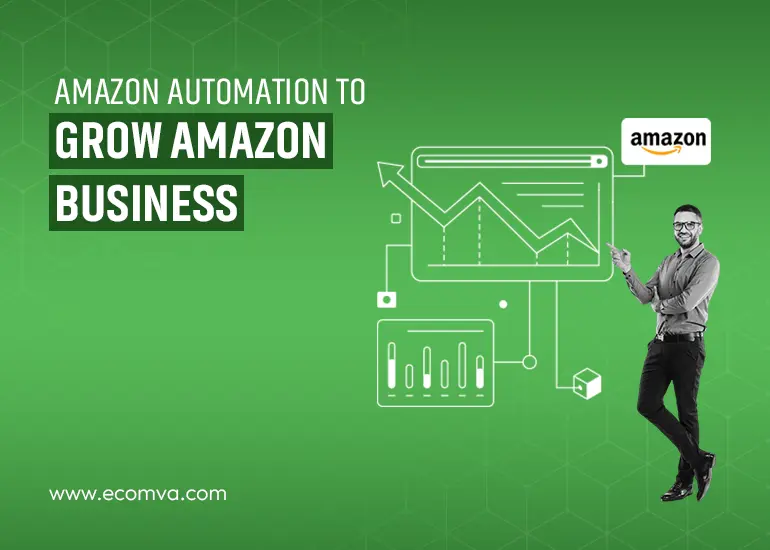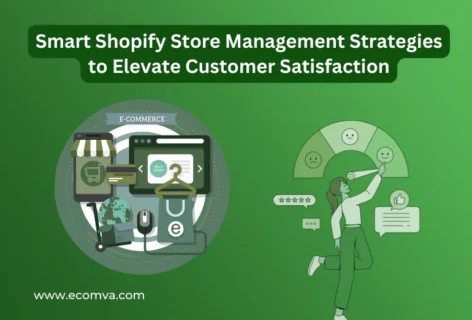Amazon Automation to Grow Your Amazon Business

Have you ever had the chance to compare an automated Amazon store to a store that is managed manually? Well, this is not exactly about replacing manual work, it is about being smart and having automation do the heavy lifting.
Amazon Store owners do so many tedious tasks on a regular basis to keep their business running smoothly. Did you know that a store’s visual and user appeal is increased by its capability to automate tasks? Whether you want to optimize workflows, improve team communication, or become the owner of a fully automated ecommerce business, let’s cover how automation can free up your time and resources.
What is Amazon Automation?
Amazon Automation refers to the process of using various tools and technologies to streamline and manage different aspects of selling on Amazon’s marketplace. By automating repetitive and time-consuming tasks, sellers can optimize their operations, improve efficiency, and focus on more strategic aspects of their business. Amazon automation can cover a wide range of functions, from dropshipping to inventory management and pricing to customer service and fulfillment. In addition, Amazon Virtual Assistants play a key role by handling these tasks manually or semi-automatically, offering flexibility and human oversight where needed.
Here’s a detailed breakdown of Amazon Automation:
1. Inventory Management
Managing inventory levels is crucial for maintaining a balanced stock—neither too much nor too little. Automation tools can monitor inventory levels in real time, triggering automatic reorders when stock levels reach a predefined threshold. This helps prevent stockouts, which can lead to lost sales, and overstocking, which ties up capital in unsold products.
Example: Amazon sellers can use tools like Restock Pro or Amazon’s own inventory management solutions to automate replenishment orders based on sales velocity, forecast demand, and ensure that popular items are always in stock.
2. Dynamic Pricing
Pricing products competitively on Amazon is a key factor in winning the Buy Box and driving sales. Dynamic pricing tools automate the process of adjusting prices based on competitor prices, market demand, and seller-defined rules. These tools continuously scan the market and adjust prices in real time to ensure that products remain competitively priced without the need for manual intervention.
Example: Amazon’s Automate Pricing feature allows sellers to set specific rules that automatically adjust their prices to stay competitive, helping them increase visibility and sales while maintaining desired profit margins.
3. Fulfillment and Shipping
Automating fulfillment processes can significantly reduce the time and effort required to manage orders. This includes everything from printing shipping labels and tracking orders to sending shipment notifications to customers. Automated fulfillment ensures that orders are processed quickly and accurately, leading to faster delivery times and higher customer satisfaction.
Example: Amazon Fulfillment by Amazon (FBA) is a service where Amazon handles storage, packaging, and shipping of products on behalf of sellers. Sellers can automate their entire fulfillment process, from storing inventory in Amazon’s warehouses to shipping orders to customers.
4. Customer Service
Providing excellent customer service is essential for maintaining positive feedback and high seller ratings on Amazon. Automation tools can help manage customer inquiries, returns, and refunds by setting up automated responses or utilizing AI-driven chatbots. This ensures that customers receive timely and accurate information, even outside of business hours. For small enterprises evaluating their fulfillment approach, understanding the differences between dropshipping and holding inventory is equally important to explore the pros and cons in this blog post.
Example: Tools like Feedback Genius can automate customer communication by sending personalized messages after a purchase, asking for reviews, or addressing potential issues, all without manual input from the seller.
5. Product Listing and Content Creation
Creating and optimizing product listings is a critical task that can benefit from automation. Automated tools can generate product descriptions, titles, and bullet points using AI, ensuring that listings are optimized for search visibility and conversion. This can save significant time, especially for sellers with large catalogs.
Example: Amazon’s AI tools can generate product listing content from a few keywords or images, making it easier for sellers to create compelling product pages that attract customers.
What are the Benefits of Amazon Automation?
- Efficiency: Automation reduces the time and effort required to manage daily operations, allowing sellers to focus on growth and strategy.
- Accuracy: Automated processes minimize human error, ensuring more consistent and reliable operations.
- Scalability: Automation makes it easier to scale operations, handling increased volumes of orders, inventory, and customer interactions without requiring additional resources.
- Competitive Edge: By automating pricing, fulfillment, and marketing, sellers can stay ahead of competitors, offering better prices, faster shipping, and more targeted promotions.
What are how you can automate your Amazon business?
1. Automate Product Listing Creation
Crafting compelling product listings is essential, but it can be time-consuming. With the power of generative AI, you can streamline this process. Whether selling on Amazon or another platform, AI can help generate product titles, descriptions, and key attributes from just a few inputs, making your listings more appealing and informative.
2. Automate Dynamic Pricing Adjustments
Pricing your products competitively is crucial but often time-intensive. Automated pricing tools can handle this for you, adjusting prices 24/7 based on predefined rules. For example, Amazon’s Automate Pricing feature allows you to maintain competitive pricing automatically, increasing your chances of securing the Featured Offer spot.
3. Streamline Fulfillment Operations
Automation can revolutionize your fulfillment process by handling tasks like printing shipping labels, tracking orders, and sending notifications. A well-automated notification system keeps your customers informed about their orders and enhances their overall shopping experience, freeing up your time for other priorities.
4. Optimize Shipping Processes
Shipping efficiency is key to customer satisfaction. By automating your shipping settings, you can calculate optimal transit times based on factors like origin, shipping services, and delivery locations. This ensures accurate delivery estimates and can significantly improve your customer experience.
5. Automate Inventory Management
Efficient inventory management is vital to avoid stockouts or overstocking. Automation tools can monitor your stock levels and trigger automatic replenishments. For instance, Amazon Warehousing and Distribution offers a cost-effective solution for bulk storage, ensuring you stay stocked and ready for sales.
6. Enhance Marketing Strategies
Marketing automation allows you to effectively communicate with customers and grow your audience. By leveraging tools that manage emails, social media, and promotions, you can create tailored campaigns, organize mailing lists, and schedule launches at optimal times to maximize impact.
7. Simplify Customer Service with AI
Customer service can be significantly improved through automation. AI-powered chatbots can handle inquiries, process returns, and issue refunds, providing quick and efficient responses. Additionally, setting up automated email responses can reassure customers that their issues are being addressed promptly.
8. Automate Review Management
Customer feedback is crucial for your business. Automation tools can help you efficiently track and respond to reviews. For example, Amazon’s Customer Reviews tool allows you to manage feedback, offer refunds, or request more information through auto-generated templates, ensuring a positive customer experience.
9. Boost Advertising Efficiency
Digital advertising can be enhanced through automation, particularly with cost-per-click (CPC) ads. Automated tools can select the most effective keywords and placements for your ads, helping you connect with the right customers at the right time. Amazon’s Sponsored Products and Sponsored Display are great examples of how machine learning can optimize ad performance.
10. Automate Risk Management
Protecting your business from fraud and intellectual property violations is crucial. Automated systems can flag suspicious activity, like high-risk orders or counterfeit listings, and take immediate action. For example, Amazon’s Project Zero combines automated protections with seller control to swiftly remove counterfeit products.
11. Gain Insights with Automated Data Reporting
Data is key to understanding your business’s performance. Automation can help by generating reports on essential metrics such as clicks, purchases, and revenue. Amazon Brand Analytics, for instance, offers dashboards that provide aggregated data on brand performance and customer behavior, enabling you to make informed decisions and spot trends quickly.
Conclusion
Amazon Automation is a powerful way to streamline your ecommerce business operations, improve efficiency, and ultimately boost your sales and profitability on the platform. By leveraging the right automation tools and strategies, sellers can optimize their Amazon store and create a more scalable, efficient, and competitive business.










